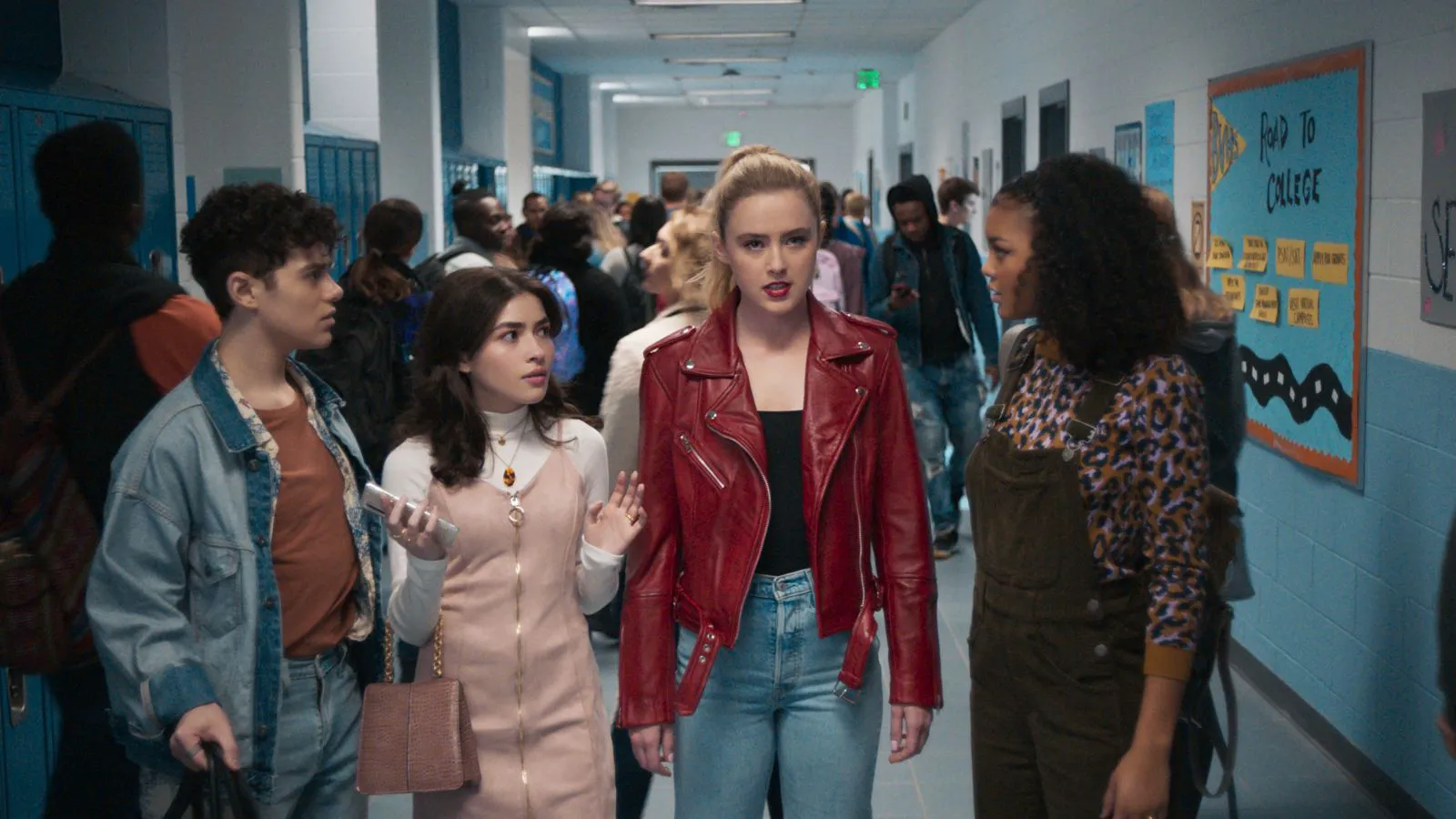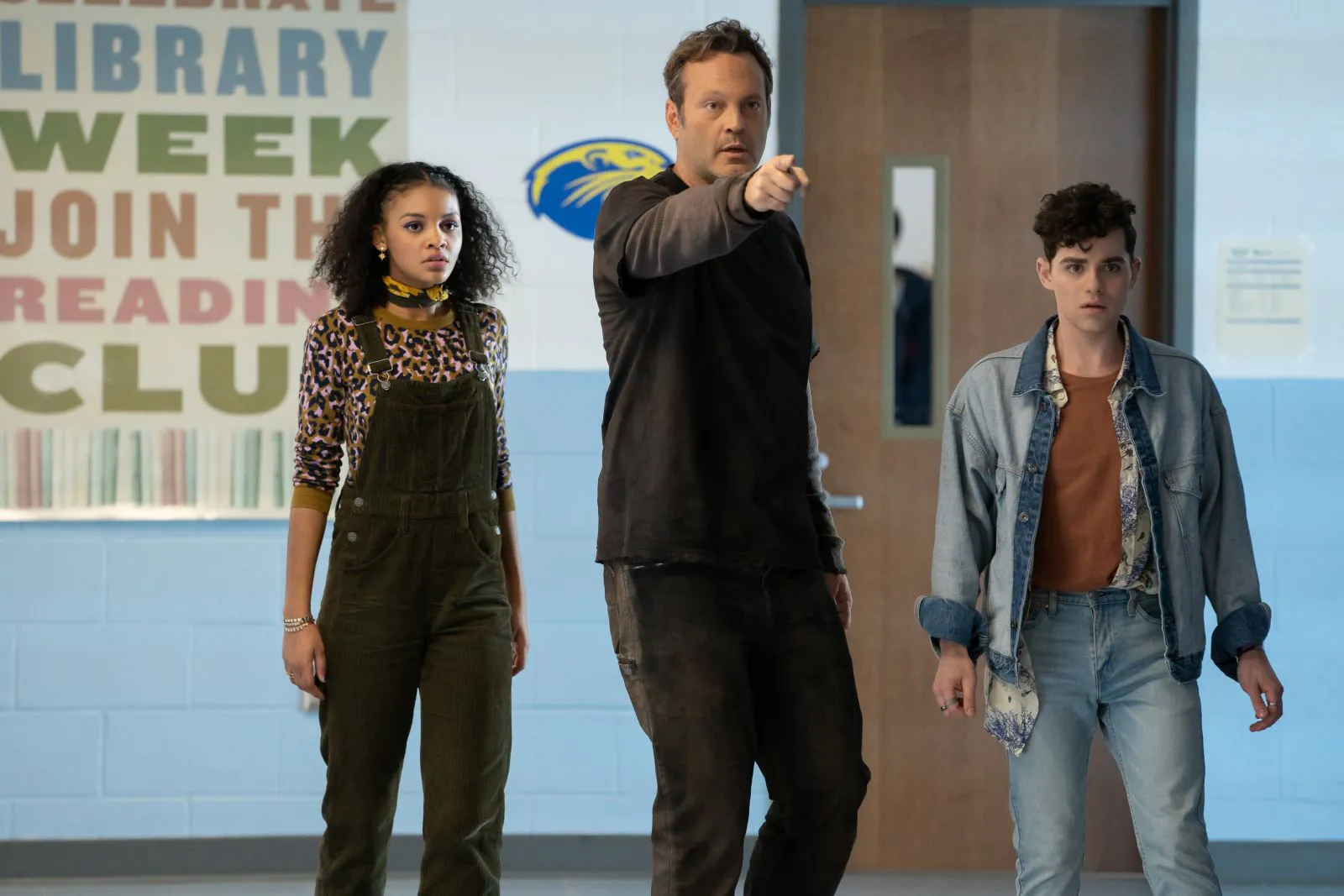Freaky: A Hilarious Horror-Comedy Mashup
Millie, a high school student still grieving the recent death of her father, faces a new nightmare when she’s attacked by the infamous “Blissfield Butcher.” This notorious killer is known for his gruesome methods, from smashing victims’ heads against toilets to even using a tennis racket as a deadly weapon. This time, he wields a mysterious knife and, surprisingly, only wounds Millie. Her cop sister arrives just in time, saving her from certain death. The Butcher vanishes into the night, Millie is taken to the police station, and the incident seems to be over. However, the next morning, Millie wakes up in the body of the hulking, sweaty Butcher, surrounded by his macabre lair of bones. Meanwhile, the Butcher finds himself in Millie’s room, trapped in the body of a shy, outcast teenager. It turns out that an ancient Aztec knife is to blame: if the ritual isn’t completed, they’ll remain trapped in each other’s bodies.

Kathryn Newton in a scene from “Freaky”
Christopher Landon continues his genre deconstruction with another comedic twist. In “Happy Death Day,” Jessica Rothe’s character was stuck in a time loop, repeatedly killed by a masked murderer. In “Freaky” (a title that also nods to Disney’s “Freaky Friday,” starring scream queen Jamie Lee Curtis and Lindsay Lohan), the formula is similar: a slasher film with a heavy dose of irony, but not so much that it’s only funny to die-hard genre fans. This is evident in the familiar tropes, from the stereotypical 2000s high school populated by outcasts, jocks, and mean girls, to the predictable love story between the shy protagonist and her “crush,” the handsome Booker.

Vince Vaughn in a scene from “Freaky”
The Problem with “Normalcy”
“Freaky” often dwells on overly simple and obvious moments. This issue was already apparent in Landon’s “Happy Death Day 2U,” where the time travel plot was reduced to the protagonist’s relationship with her deceased mother. Here, in addition to the aforementioned clichés, there’s also a lot of contrived grief over lost relatives. It’s as if the writers realized this was an easy way to create character conflict and have been overusing it in Blumhouse films ever since. In “Freaky,” an entire family suffers from this: the mother drinks, the sister becomes distant, and Millie withdraws into herself.

A scene from “Freaky”
Absurdity at its Finest
With such a crazy concept, you’d think dramatic justifications wouldn’t be necessary, or at least not so predictable. This is a film where Vince Vaughn nonchalantly kills a teenager by shoving a bottle down his throat, then tries to act like a high school girl and even kisses the cute Booker (arguably the best kiss scene of 2020). How could it need anything else? The bloody murders seamlessly transition into absurdist comedy, reminiscent of the sexist “The Hot Chick” with Rob Schneider, yet also a progressive story about a woman’s empowerment through overcoming her tormentor.
A Missed Opportunity?
Brian Bertino (“The Strangers,” “The Dark and the Wicked”), for example, excels at working with genre in a precise, detail-oriented way, where even standard plots are elevated through cinematography and subtle visual choices. “Freaky” is the opposite: its concept unfolds as expected, but it’s held back by its irritating “normalcy.” Landon takes surefire situations and directs and tells them by the filmmaker’s textbook. No matter how wild the source material, Blumhouse often manages to simplify everything, turning a chaotic joke into a calculated, rehearsed, and only occasionally funny one.